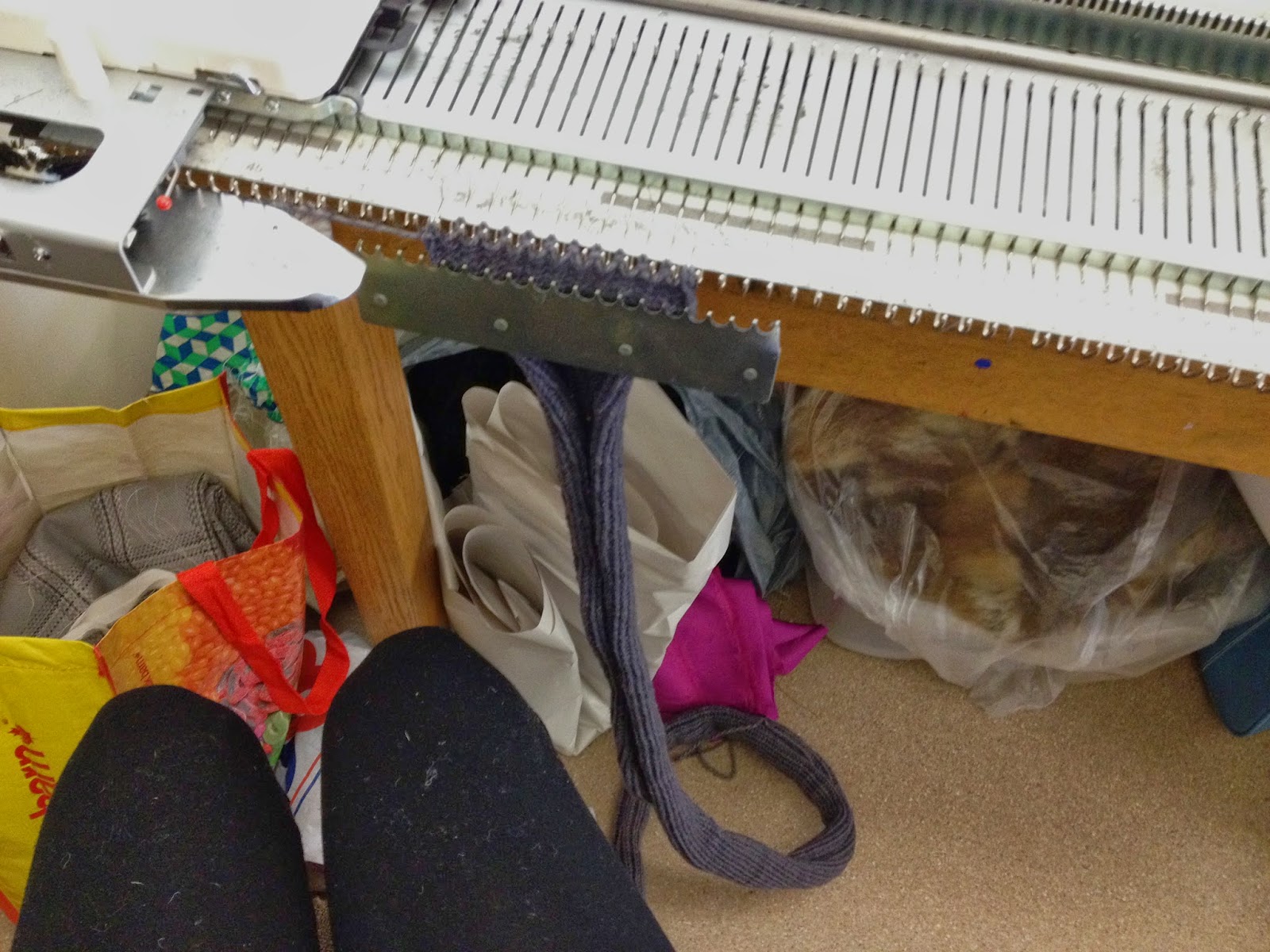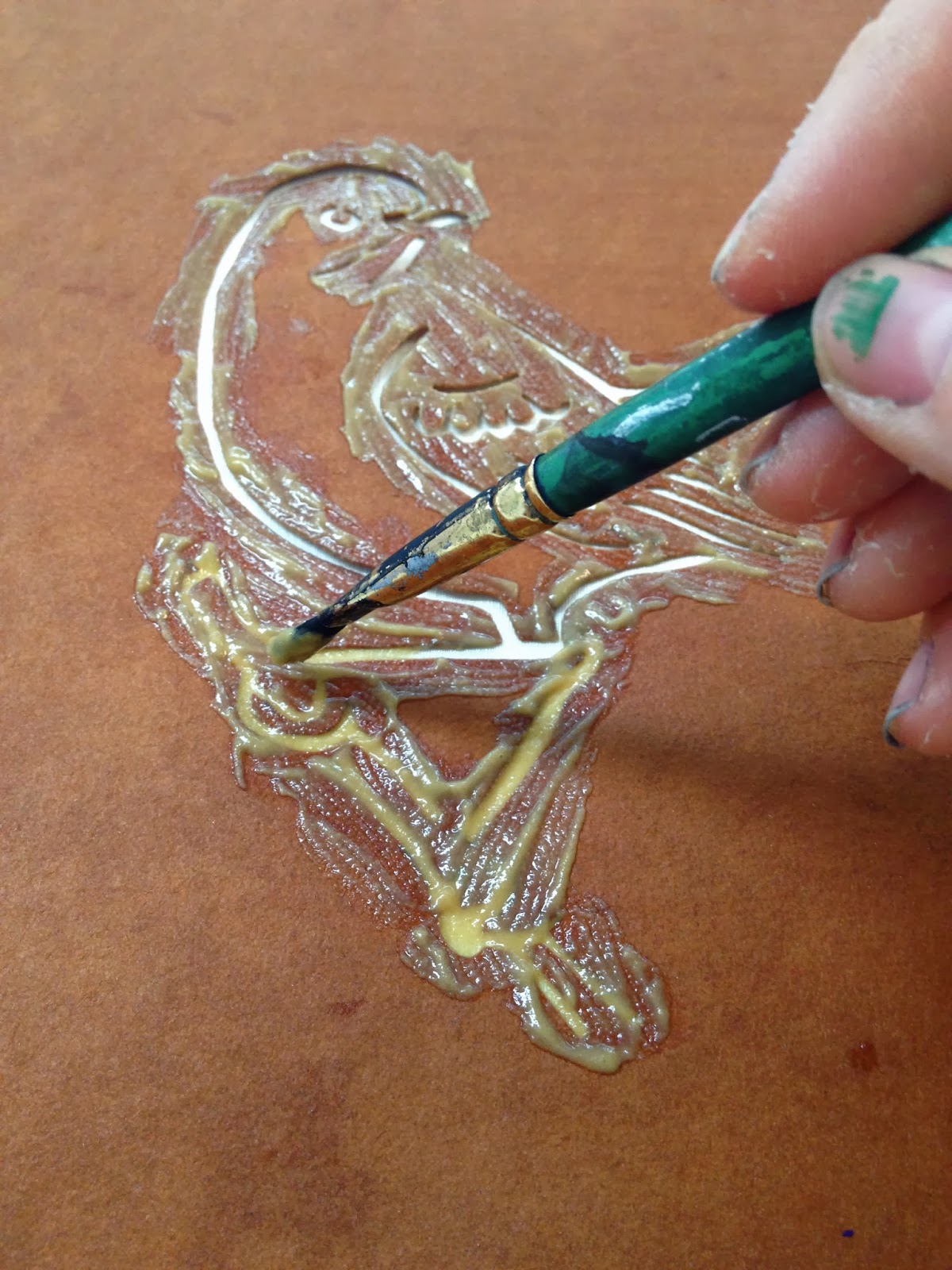I began with the whale's throat grooves, which I am knitting in the light grey wool. They run a little less than half the length of the whale, and will cover approximately the bottom third of the circumference of the whale's body.
The throat grooves are all going to be knit separately, and then sewn together without being blocked. Leaving them unblocked will allow them to curve outwards slightly between each seam, giving them that 'throat groove' look.
Each throat piece is 12 feet long, which, at this particular tension, works out to be 864 rows of knitting. They all start out at six inches wide, and gradually taper to two inches by the end of the groove.
Here's a picture of me doing a decrease of one stitch, which is how the taper is created:
And, here's a throat piece all stretched out:
And a pile of throat grooves with mug for scale:
I'm really excited to have started knitting. I am having some concerns about not having enough wool, but it's cool to have finally gotten started on what is, for me, the most appealing part of the project. I plan to have the throat groove knitting finished by the end of the weekend, and likely start on the tail and fins next week.







































